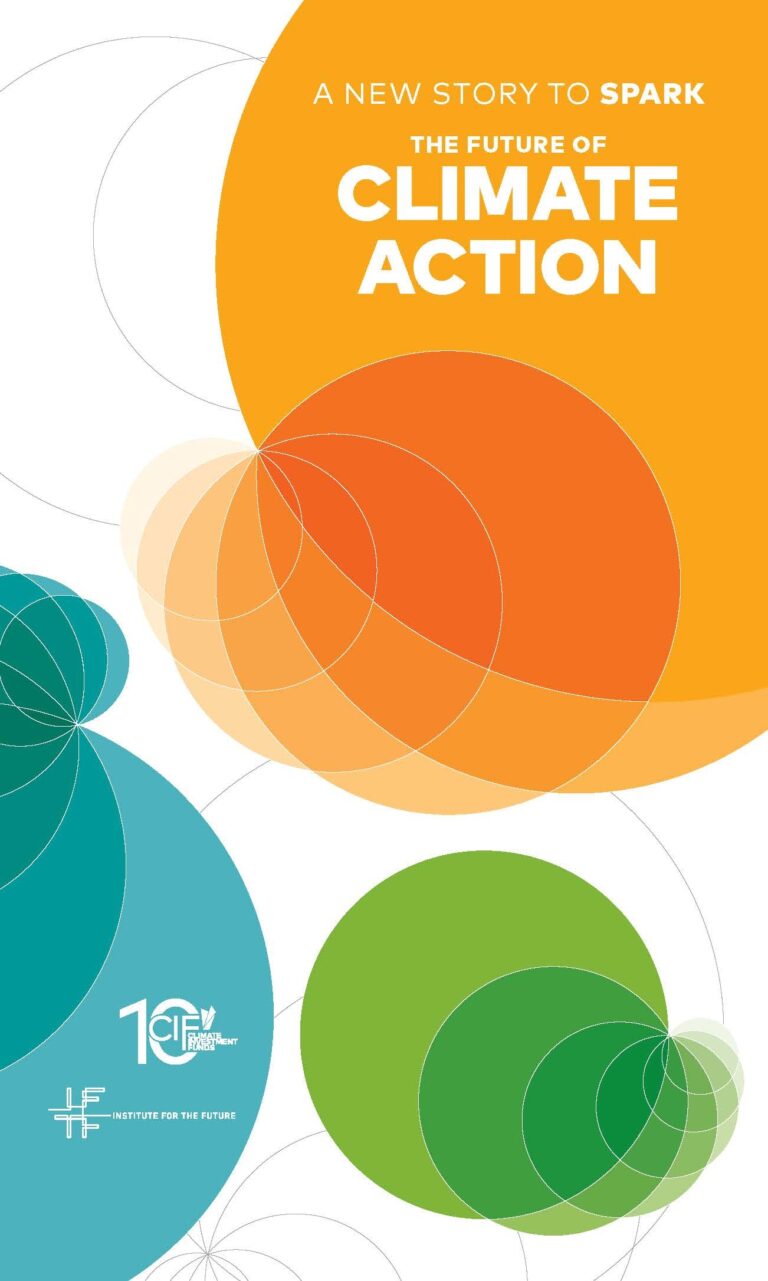The Institute for the Future and Climate Investment Funds join forces at the Global Climate Action Summit to forecast new trends, barriers, and actors in climate change
The next decade is rich with opportunities to take meaningful action against climate change, a new study from the Institute for the Future (IFTF) and the $8.3 billion Climate Investment Funds (CIF) shows. Launched today at the Global Climate Action Summit in San Francisco, the A New Story to Spark the Future of Climate Action study and its accompanying art installation illustrate opportunity zones for climate action over the next decade—including artificial intelligence, digital engagement, youth movements, and the new climate economy—that can accelerate progress toward a low-carbon world.
The joint study forecasts trends that will mold the climate action landscape by 2030. Their analysis concludes, among other things, that disruptive technologies like blockchain and the rise of “solastalgia,” or the wistfulness one feels about terrains lost to climate change, will be increasingly powerful drivers of global and community-level change.



